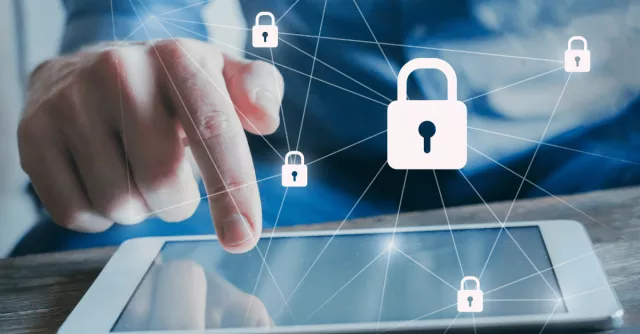6 Ways to Protect Your Business From Email Threats

Emails are just as prone, if not more, to incoming threats. Thankfully, monitoring them is easy, and danger is avoidable. Knowing the current hazards and applying best practices will allow businesses to navigate the digital world safely. Nobody anticipates incidents, so it’s best to eliminate worry and create security.
What’s attacking email inboxes, and what preventive measures can a business take?
2022’s Current Threats to Your Inbox
All strong security infrastructure starts with a great business continuity plan. Employees will know measures are in place if any disaster or incident occurs, physical or digital. It’s a worthy endeavor to take as much time as needed to craft a thorough plan to beat 2022’s current email threats.
What are the most significant crimes hitting inboxes? Here are some of the top contenders from 2021, according to FBI reports:
- Phishing
- Nonpayment or non-delivery
- Personal data breaches
- Identity theft
- Extortion
- Fake captcha scams
- Response-based attacks
- Tech support
It’s important to know what was prominent in previous years to make accurate predictions for the rest of 2022. For example, the FBI’s Internet Crime Complaint Center received 467,361 reports in 2019. Many scale as more businesses rely on technology. Trends are becoming a reality as phishing scams become more sophisticated and hackers become more innovative.
The most common of these attacks for businesses are credential theft variants, representing 58% of email threats in recent history. These are individuals trying to steal login information for your accounts. Phishing and malware delivery via attachments are also on the rise.
Best Tips to Protect Your Business
These scams are dangerous because they are tailored, automated, and impersonate individuals in your company. They succeed by gaining the email owner’s trust by crafting messages that look legitimate and branded.
They can appear to be everything from an invoice to something related to current events. Emails relating to the pandemic and international events are easy ways for scammers to fool companies into believing the content.
Ultimately, the best action plan is a prepared one.
1. Install Secure Software to Scan Regularly
Consult with your IT team to install excellent antivirus and anti-malware software on every machine in your business. There are plenty of options with varying degrees of protection, but remember, this is something worth investing in the budget.
Consider how much peace of mind this security will provide your business. Knowing your assets and employees have a digital insurance policy because you made a significant investment will reduce anxieties.
There is other software available that isn’t anti-malware or antiviral, including third-party mail filtering services or encryption software that can pre-scan emails before they hit your employees’ inboxes.
2. Back Up Important Data with Secure Hardware
The hardware is just as necessary as the software. Imagine an identity theft attack coming through your email, and suddenly, you can no longer access your cloud or information regarding the company.
It’s worth it to have external hard drives, not connected to Wi-Fi or anything a hacker could potentially breach. Ideally, they contain up-to-date records of your business. Remembering to transfer data regularly to keep it current is essential.
3. Stay Informed of Current Threats
As the saying goes, knowing is half the battle. If your business wants to make security a priority, read tech-related news to ensure you know what threats will look like in the future. They won’t stay the same forever, and even phishing scams can look completely different next year.
Make sure you aren’t relying on old knowledge to guide you into the future when this industry is constantly changing and adapting. Share the current trends with employees as well, so they are informed.
4. Set Up Multifactor Authentication and Password Management
Having secure architecture creates resistance for even some of the most brilliant hackers. Many email logins now will ask for multifactor authentication, requiring the cellphone of the account owner to input a code texted to them.
Hackers can overcome these barriers, but multifactor identification creates challenges for hackers, buying your business time to fix the issue. Hackers may have the passwords, but they don’t always have all the tools they need to succeed if multifactor authentications are in place.
On top of this should be a well-protected password management system to prevent scams like credential and identity theft. Ensure employees change passwords at the recommended frequency with the correct combination of characters for optimal security. Each password should be unique for every account, so the one for your email should not cross over to other sensitive accounts. Once that hacker has one, they can access all accounts; unique passwords prevent this from happening.
5. Curate and Test Your Continuity Plan
Staying protected will be seamless if everyone on your staff knows the protocol for email attacks. Employees will learn how to access documents to follow plans if they’re ever feeling confused or concerned about safe practices.
What if there’s a ransomware attack? What if employees aren’t even sure what ransomware attacks look like? These details can all be laid out in a continuity plan, detailing whom to report to, how long operations could be down to fix the issue, and how data retrieval works.
Once the business creates the plan, you don’t want to wait for the danger to strike to ensure it works. Thorough testing can occur before that happens — and hopefully, it never will. Testing helps reinforce your emergency protocols in many ways, like identifying weaknesses in the plan, evaluating your employees’ responses, and confirming you will meet your business goals.
6. Train Your Staff
It’s integral to ensure your IT department has insider info on email scams. Teach employees how to avoid phishing, report suspicious messages to proper avenues, and take action if they feel their information is compromised.
It’s vital to remind employees how innovative hackers are. Show examples of how social engineering attacks look, like deepfakes or scareware. Encourage workers to ask colleagues around the office if they received similar alerts if the subject line looks questionable.
Always remind them never to give away personal information or believe something that may be too good to be true without running it by superiors. The key is to increase awareness to reduce risk. The more intelligent and prepared your employees are, the fewer incidents will occur.
Proceed with Greater Intelligence
The comforting thing about creating a secure digital environment, especially with your employees’ emails, is that it protects your business and the individuals working for you. Embracing operational resilience — anticipating, preparing, responding, adapting, and learning — in the face of potential threats is a great way to prove your company can thrive despite obstacles.
Zac Amos is the Features Editor and a writer at ReHack, where he loves digging into business tech, cybersecurity, and anything else technology-related. You can find more of his work on Twitter or LinkedIn.


